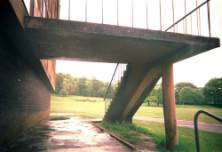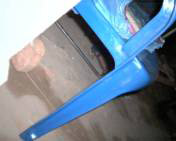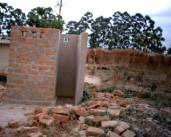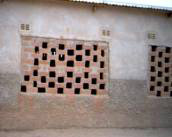Visualising Inclusion
Ian Kaplan
Working with students to take their own photographs as a way of exploring their school and its culture is gradually gaining acceptance amongst NGOs, academics and policy makers. It is increasingly seen as a valid and ethical way of conducting research in schools.
My colleagues and I have been using this approach with students as part of more traditional research projects in schools for several years now. However, this participatory method of engagement and expression deserves to have a more substantial role in educational research. It has inspired and influenced our recent work with students in the UK, and in Zambia as part of EENET’s action research project. In response to government pressure in the UK for service providers to engage with the perspectives of service ‘users’, these approaches are invaluable.

The power of images
The power of images is very real, but is often overlooked or little understood in education. Images have the potential to ‘represent, engage and influence’ – and can include photographs, drawings, video and maps. Images are accessible to many who find it difficult, or even impossible to access text.
Images can enable those at risk of marginalisation from education (children, people with learning disabilities, and those who have limited literacy skills) to engage with ideas and information. Perhaps they cannot or do not want to read text. Images also have the power to engage those who produce and use text all the time, such as school managers, policy makers and academics.
Participatory photography
Traditional research approaches (eg, questionnaires and interviews) can be limited in their ability to engage students and represent their perspectives. Participatory photography and arts-based approaches can offer a more engaging and relevant alternative. Child participation is a fundamental part of inclusive education and any school which aims to be inclusive. Students can use cameras to take their own photographs as a way of considering their perspectives about school and inclusion. Their photographs can be a form of evidence, but also a means of reflecting on and sharing their experience of school and education: a way of making their ‘voices’ heard.
Participatory photography has the potential to be an important part of action research which involves students directly in the process of school change and improvement. Students can use their photographs and commentary to help other educational stakeholders (eg, teachers, school managers, parents) to consider their perspectives. The images can also be used to promote more inclusive learning environments. Students who are directly involved and consulted in the running of a school gain a sense of ownership and participation in their own education: they become more than just ‘receivers’ of knowledge.
What does inclusion look like?
Photographing evidence of a concept as complex as inclusion is not easy. Many photographs that are intended to be examples of what inclusion looks like show people with white sticks or in wheelchairs in mainstream classes. There is nothing wrong with picturing this type of inclusion, but disability is not always visible and many people without disabilities are also excluded from education. Photographs which reduce inclusion to the physical presence of learners with obvious impairments in mainstream classrooms have limited value, if left unchallenged. But they can be much more valuable when used to provoke debate about inclusion. They do not have to be literal to have meaning, but can be both the product of, and means of, promoting imagination and critical thinking.
For example, an image that does not at first appear to be about inclusion can get people thinking about inclusion. The photograph below is an example of this. An image of a blue plastic chair may not seem to relate to inclusion until we consider that the student who took the picture wanted to show the desirability of this chair, the only one in the class. This chair was the teacher’s. The students, who sat on broken benches or the floor, also wanted chairs like this to make their learning environment more comfortable and inclusive.

Photo by pupil, Mpika, Zambia
Photographs can be a very good way of showing evidence of the things that make educational inclusion and engagement difficult, such as unsafe toilets and bad quality windows.
 |
 |
|
Photos by pupils, Mpika, Zambia
|
|
School geography
Geography is sometimes a subject taught at school; but a school also has a geography of its own. How are buildings, classrooms, play areas and school grounds in general designed and organised? What about issues of safety and space? All these factors affect the learning environment and overall inclusiveness of a school. Students’ photographs and commentary can be a great way of exploring the geography of a school.
Children in Zambia, were asked to create maps of their school. They worked in groups to discuss the places, things and people that made them feel welcome or unwelcome in school. They represented this information on a map. One further adaptation would be to add photographs to the maps. The activity helped them to develop group-work skills and to negotiate their opinions with others. It also led to lively debates: the children saw their familiar school environment through new eyes, and learned to analyse problems and suggest solutions. Their teachers have even adopted similar ideas in their day-to-day teaching.
Community involvement
Exhibitions and community meetings can be a forum for students’ images (and perspectives) to be shared with a wider audience, such as parents, teachers, school managers and government officials. However exhibitions and meetings do not happen spontaneously; they need careful planning and facilitation to avoid students’ perspectives being lost, ignored, or misrepresented.
We helped organise an exhibition of pupils’ photography and drawings in Mpika, Zambia in the hope of getting parents and teachers engaged with student perspectives. However this exhibition was not straightforward. We assumed too much prior experience among participants and placed too much emphasis on informality. We were inevitably faced with a group of confused parents and children who did not know what to do after looking briefly at the displays. They were not used to the idea of spontaneously analysing and discussing what they saw in the exhibition. A lively discussion about what the images meant to the children and the community was only possible in a more formal session. Interestingly, the children who are already experiencing education within an inclusive school were more confident about analysing and discussing each other’s images than their parents were!
Ian Kaplan is a research associate in education at the University of Manchester. His particular interest is image-based research and its potential for enabling the ‘voices’ of marginalised groups to be heard. Contact:ian.kaplan@manchester.ac.uk or via EENET.